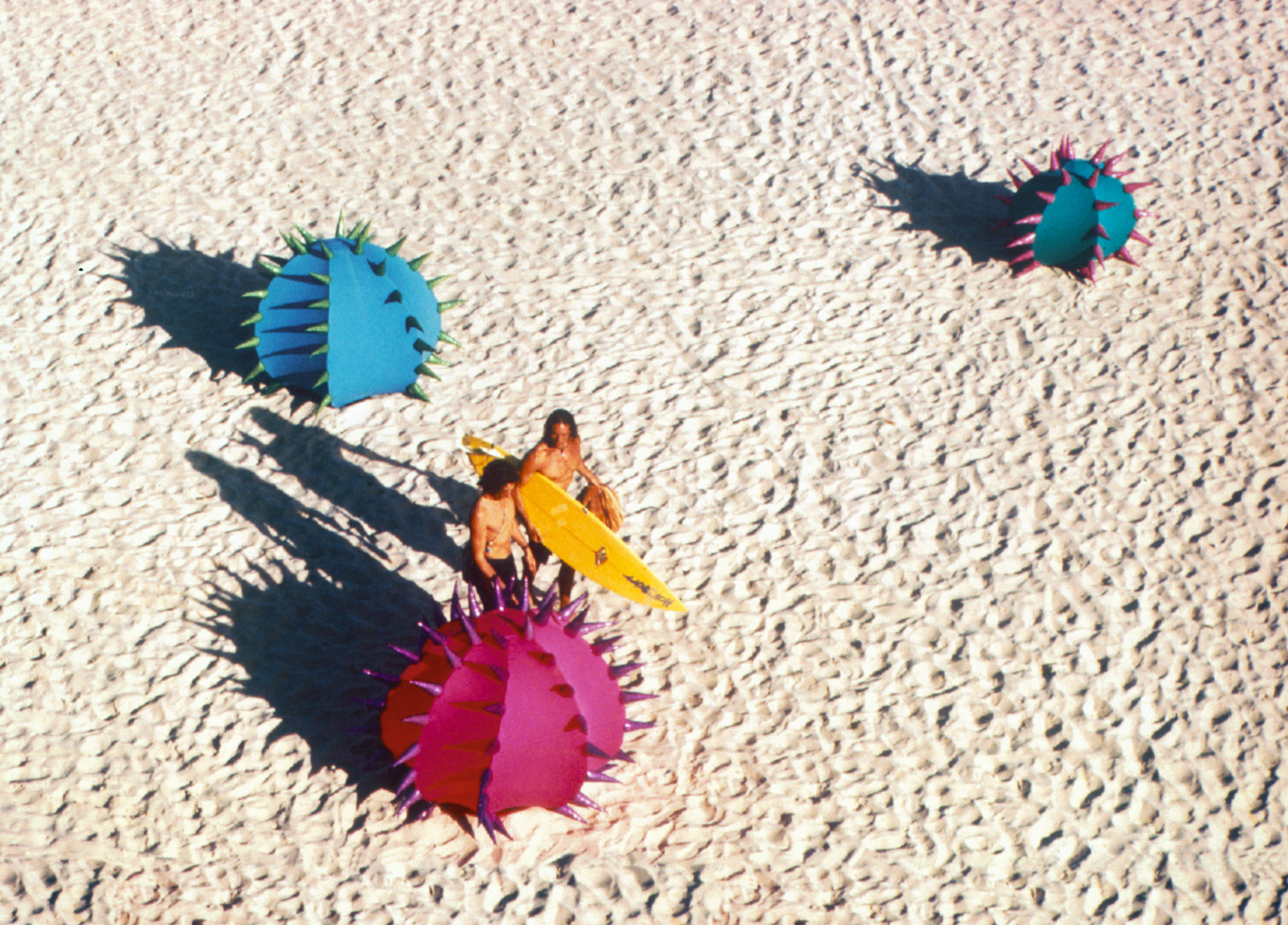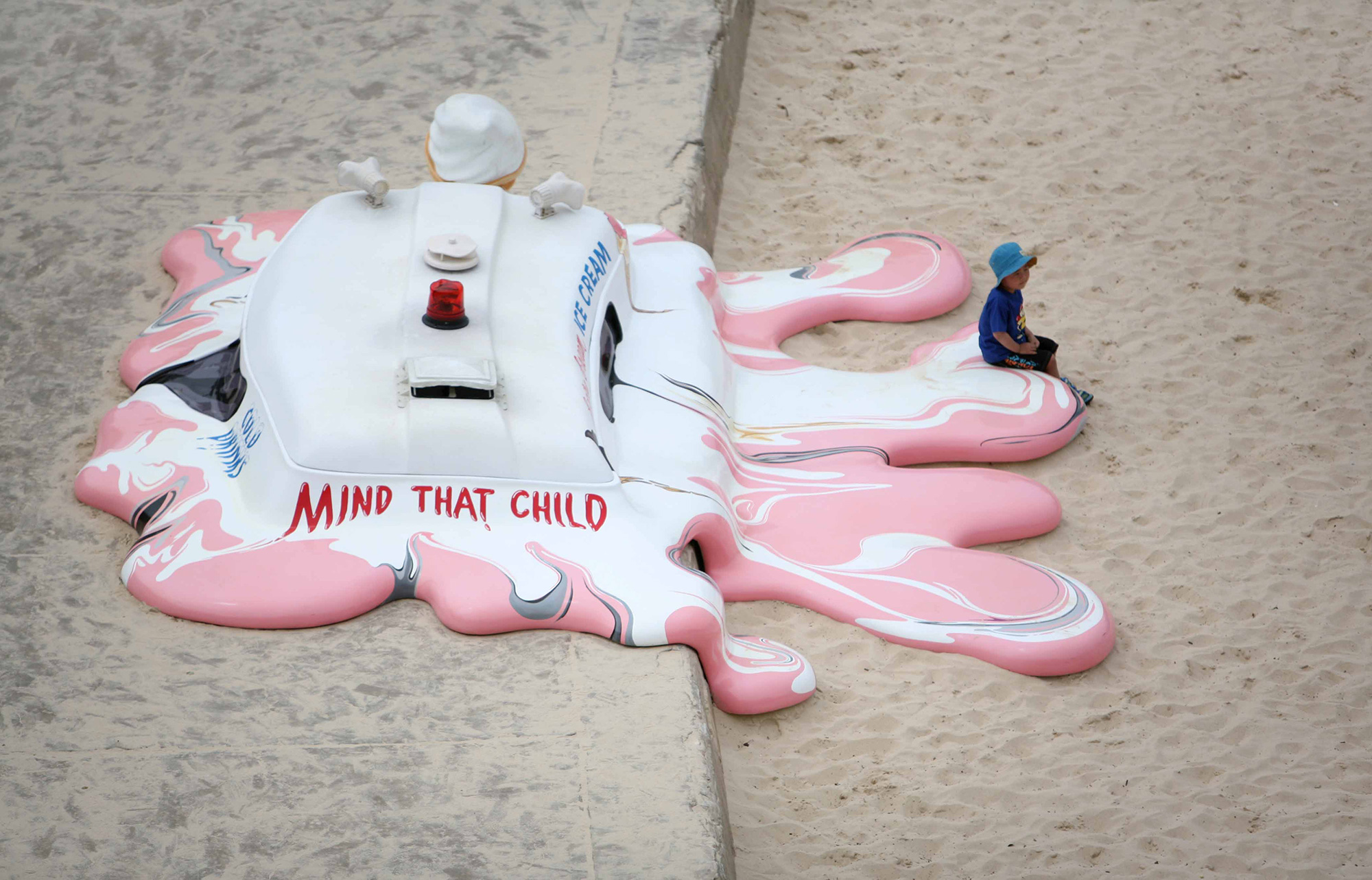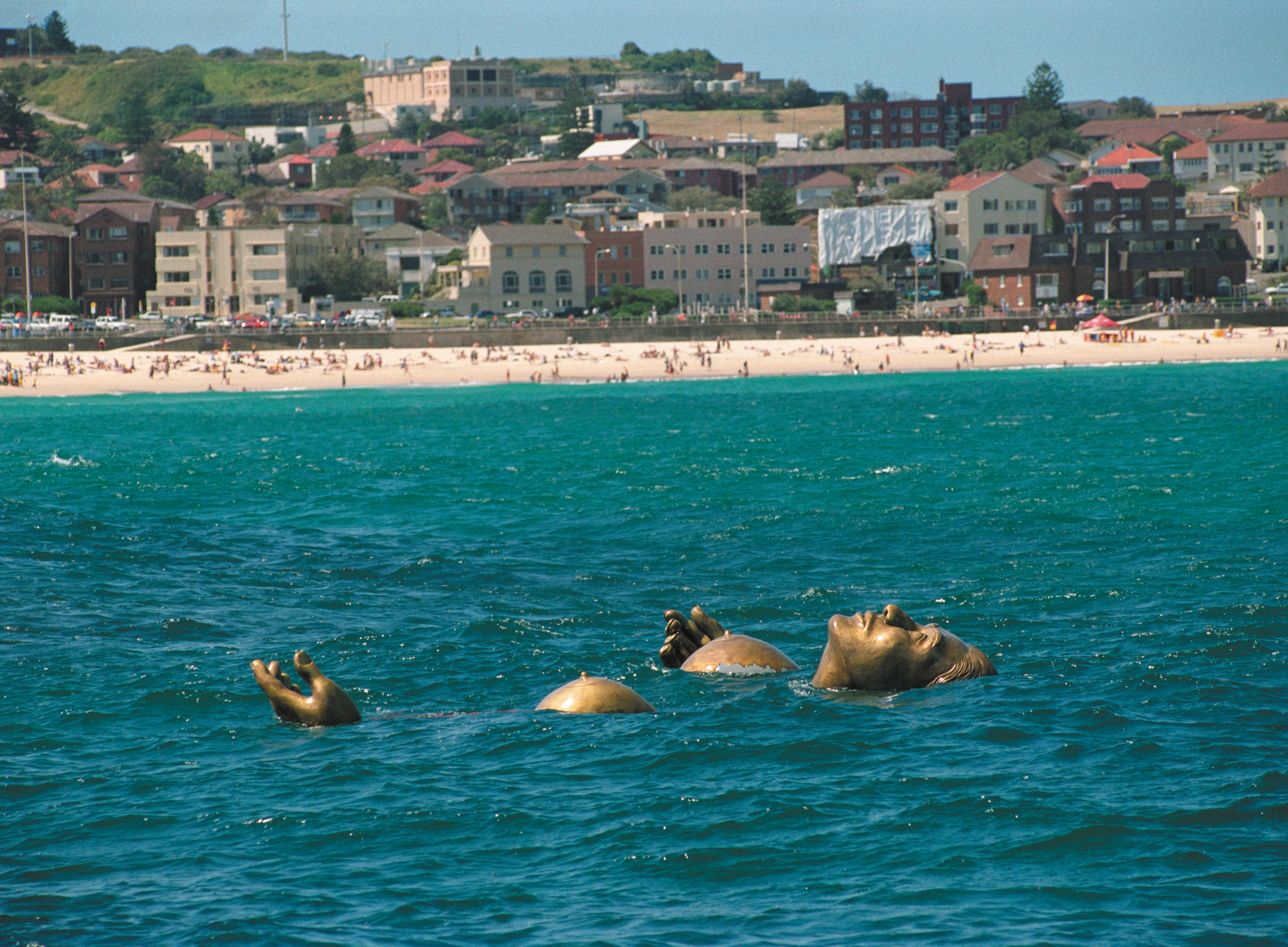Implausible, Idealistic, Iconic: An Oral History of Sculpture by the ...
Published on 19 October 2023
by Lucy Bell Bird
Sculpture by the Sea and I were both born in 1997. Except for a brief Covid-induced pause, I’ve never known the city to exist without the iconic sculptures that pop up along the Bondi to Bronte walk each spring, bringing heavy traffic, gushing crowds and declarations that you’d never see anything like this in Melbourne. Sculpture by the Sea and Sydney are, for me, inextricably linked.

But when you think about it, putting massive sculptures (many of which weigh tonnes) on the side of a cliff is sort of an absurd idea. Who would do that? How do you convince sculptors to put their carefully crafted works on a public beach? And how do you pull it off 25 times?
We traced the story of Sculpture by the Sea back to the beginning, speaking to founder David Handley and six sculptors who have been instrumental to Sculpture by the Sea’s success.
This is Broadsheet’s oral history of Sculpture by the Sea Bondi.
David Handley, founder and directorThe idea to hold a large public event first came to me in 1991, but the idea of featuring sculptures wasn’t until late 1993. I was living in Prague, having stopped being a lawyer, and I went to a fantastic exhibition of Czech sculptors who had been driven underground during the communist years … and seeing the contrast of modern sculpture with 13th-century ruins [made me think]: “How would that work in an Australian context?”
Having an idea is the easy part – executing it is harder. Four years later, Handley made the dream a reality. The first Sculpture by the Sea exhibition was held in 1997.
HandleyPeople got behind the idea so quickly. [For that first exhibition] we had a small group of half-a-dozen key volunteers and it was all put together in 10 weeks, working from my lounge room. We worked like absolutely mad people – and no one got paid a cent. We got Swatch and Ray-Ban on as sponsors and, if you really worked hard, you got a pair of Ray-Bans and a Swatch.

You can’t run a major public exhibition with just a dedicated team of well-accessorised volunteers. The next move was winning over the art world.
HandleyThe first phone call I made was to someone at [auction house] Christie’s, who agreed to be a judge. The second phone call was to Ron Robertson-Swann, one of the leading sculptors in Australia. He saw the potential and put the weight of his reputation behind it.
Ron Robertson-Swann, sculptorI first heard about Sculpture by the Sea almost before David did. He says I was the second person he contacted when he had the idea. He went to school with my son, Cashiel, and when he told his mother the idea, she said, “Don’t you know who Cashiel’s father is?”
At the time, Robertson-Swann was the head of the sculpture department at the Canberra School of Art. The success of the 1997 exhibition hinged upon his ability to get his peers on board, as well as a low-cost advertising campaign.
Robertson-SwannLook, I wasn't that convinced myself, so it was a bit of a struggle to convince the others.
Michael Le Grand, sculptorIt didn’t take that much convincing. I was working closely at the Canberra School of Art with Ron and he raised it with me and I thought, “This is not a bad idea.” It was only a one-day event, so I took down an eight-metre sculpture in three sections, assembled at 7am in the morning and disassembled it at 4pm.

Margarita Sampson, sculptorI first heard about Sculpture by the Sea in the local paper. Maybe the Wentworth Courier? There was an ad asking for sculptors to submit and I wasn't a sculptor. But I’d just started playing around with 3D forms and I could sew, so I figured if I could turn two dimensions into three dimensions I’d be able to make little textile sculptures. When the ad turned up, I thought, “Oh, maybe I'll just make a really big one.” And it worked!
Sampson’s gamble paid off – and so did Handley’s. The 1997 exhibition was a success.
HandleyThe only time I stopped for breath was 4pm. [I sat down] with Ron Robertson-Swann and Michael Le Grand and we were overwhelmed. Twenty-five thousand people turned up on a $400 marketing budget.
Robertson-SwannWhen I saw the response from the public [to that first exhibit], that was the wake-up call for me. There was a huge response from sculptors too. They'd been severely neglected up until that point – we were the poor relations to painters.
HandleyThe subterranean logic of major events is they have to grow from one year to the next. [It was clear] that the next year it had to be a multi-day exhibition. And how do you do that with volunteers? And where do you find the money?
A couple of months later we were commissioned to do five Sculpture by the Sea exhibitions around Australia for the Olympic Arts Festival in 1998. And we went from an $11,500 budget in the first year ($8500 of which was artist awards) to a $360,000 budget the next year. That was exhilarating.
.jpg)
The exhibition continued to grow, attracting new sculptors and repeat submissions. Images of the works along the coastline and on the sand become internationally recognisable symbols of Sydney.
Philip Spelman, sculptor [In 1997] my good friend Michael Le Grand was encouraging me to join the exhibition … and I said, “There's no way I'm hauling a sculpture up to Sydney for one day.” I said the same for the second one. And then, on the third exhibition, I said I applied and got in. People were coming from overseas to exhibit and I was complaining about having to come up from Canberra, so I felt pretty silly. On my fourth exhibition, I sold a nice big one-tonne steel sculpture to someone in the United States. It was the first time I’d sold internationally.
SampsonMy piece for the 1998 exhibition was one of my favourites. It was called Fish Curtain (and won the People’s Choice Award that year). It was 500 hand-sewn silver lamé fish strung in rows on fishing wire. You could walk between them and, when the wind blew through them, they all turned at the same time. It was like being in the middle of a school of fish.
We had king tides during the install in ’98. Waves were coming up to the seawall at Tamarama and we were standing knee-deep in water, holding all the fish in our hands, worried they would swim away.
Lucy Barker, sculptorI was living in Bondi at the time of the second or third exhibition and I remember thinking “Oh my gosh, I want to be a part of that.”… I put in an idea for the next one and I didn't get in. (That was a blessing because I wouldn't have had a clue how to create what I proposed – I think it was some sort of giant sandcastle.) I entered again in 2009, which is when I got in, and I've been in most times since then.

Soon the festival had a surplus of artists applying from around the globe. Even members of Sculpture by the Sea’s “decade club” – a group of artists who have been a part of 10 or more exhibitions – sometimes failed to make the cut. Attracting artists was no longer a problem, but the actual act of placing sculptures along the moisture-logged shoreline (and even in the ocean itself) continued to cause logistical challenges.
HandleyMarks Park used to have really shitty sandy soil. Then the council changed it for one that traps moisture – so if we get more than a drop of rain, it becomes muddy. One year it bucketed down and it was basically inoperable. I’ve had a lot of therapy to forget this one – I think it was 2018.
SpelmanThere were torrential downpours and Marks Park turned into a mud bath. You basically dropped your sculpture at the gates and [prayed]. I wondered if they’d cancel the exhibition.
Le GrandIt was like the Somme. [It] could have spelled disaster. There was another one where there was a southerly bluster and there was a [sculpture of a] floating woman in the sea near Bondi and one of [the breasts] became untethered and was blown off towards New Zealand.
Robertson-SwannIt was a massive nude figure – or parts thereof – and I think the boobs took off and, I imagine, frightened some surfers or engaged them. They were surfing with a breast.

Despite the rain and a lack of government funding, Handley says he’s inspired to push on each year when he sees “that first child's face beaming with delight”.
Ayoko Saito, sculptorI saw this small baby try to crawl into my sculpture once. I always say, “Do not touch,” but it was nice to see because I saw that work like a cubbyhole and I think the kids feel a similar way.
SampsonI had a work called The Grove, which was a big tree form that had cedar shingles. We didn't [initially] realise that you could twang the cedar shingles and the whole thing turned into a musical instrument. We had a tour for the visually impaired and we showed them how they could twang the cedar panels and find their own way to encounter the work – that was one of my favourite moments.
On Friday October 20, Sculpture by the Sea will welcome the public back for the 25th exhibition in Bondi. Barker, Sampson, Le Grand, Saito and Robertson-Swann are all exhibiting, alongside 100 other sculptors from 21 countries.
BarkerThis year's work is a participatory one. It is quite an experiment, but I'm setting up a Hills Hoist clothesline and it's going to be a clothes swap, so the audience is invited to hang clothes on the line or remove them if they find something they like. It’s all about sharing resources and trying to just do a little bit towards repairing [the damage of] fast fashion.

SampsonThis year I'm working with a body-diverse model called Tia Rose and she's part of a troupe called the Fat Muses. [My work is all about] celebrating different body types and being comfortable in whatever body that you have. We did life-drawing sessions with Tia, and then I've remade that classical female form from welded steel rods, which will be painted hot pink in automotive paint. It’s very fun, very joyful.
Le GrandMy work for this year is a long fluid piece. It’s recently been painted with a coppery red paint and it’s ready to rock’n’roll. I don’t do works that are deep and meaningful.
SaitoI’m not good at talking about sculpture.
Robertson-Swann[Ayoko’s] is a continuation of her major theme, only more ambitious and larger. She’s found a very beautiful blue that works emotionally with the sculpture and it’s just damn good.
Mine? I'm not even sure what mine is yet.
Sculpture by the Sea Bondi runs from October 20 to November 6, 2023.



















































